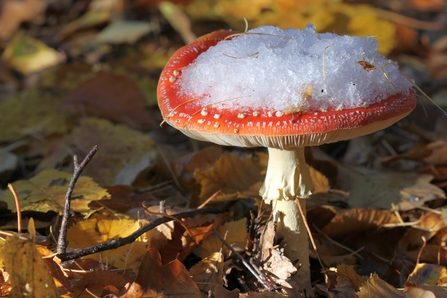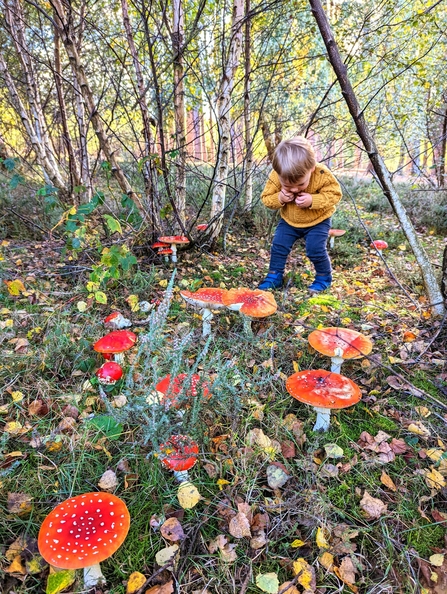The fly agaric is a mushroom steeped in great history and folklore, and this is mostly due to the two toxins contained within it, ibotenic acid and muscimol. If ingested, these toxins combine to create hallucinogenic effects, and fly agarics have therefore been consumed as part of shamanic rituals dating back 10,000 years or more. One of these rituals, performed as part of the Siberian midwinter festivital of Annual Renewal, would see a shaman gather fly agaric from under sacred trees whilst wearing red and white fur-trimmed coats and long black boots. He would then enter the yurt (a teepee-like structure) where the ceremony was taking place through a hole in its roof and slide down the central supporting birch pole, bringing with him a bag of dried fly agaric. Could this be the origin of Santa descending through a chimney carrying a bag of gifts?
Fungi, Folklore and Christmas: How Fly Agarics Shaped our Festive Season

A much more likely way in which the fly agaric has influenced our Christmas mythology is due, remarkably, to reindeer urine! For a human to consume the mushroom without proper preparation or precautions would be to incur its side effects – sickness in most instances, but on the rare occasion, death. Once ingested, however, its hallucinogenic qualities are subsequently excreted unmetabolised and unaltered. Since it is a favourite food of reindeer in the Arctic Circle, the Sami people discovered that by drinking the urine of those reindeer who had gorged on fly agarics, they would experience almost as great an hallucinatory effect as if they had eaten the mushrooms themselves. The heightened senses created by those effects can produce visions of flying, and it is thought that Santa’s flying reindeer were born in a fly agaric induced trip of somebody who had drunk reindeer urine!
Aside from Christmas, it is believed that these remarkable little mushrooms have done everything from inspiring a scene in Alice in Wonderland to being eaten by Viking warriors before they charged into battle, aiding their rage and fearlessness. However far their influence has extended, they continue to add striking colour and beauty to the world around us each year. You can find them in woodlands throughout the country from late summer until the first frosts of winter. My heart still leaps every time I unexpectedly come across one. I do not think my excitement will ever tire.

Our Comms Officer's son discovering fly agarics at Sutton Park

